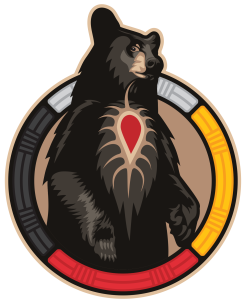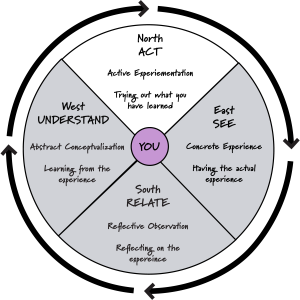
Congratulations on reaching the Finish Point for Module 1! What follows is an opportunity for you to apply your knowledge from Module 1 to a scenario. Think about how you will work in relationship with Anishinaabe people. How do you enact what it means to be a partner to empower Anishinaabe people to be well?
Moving Into the North: Acting on What You Have Learned

Module 1 Finish Point: Learning Scenario
In this scenario video, you will meet Cecilia. Cecilia visits with a service provider and begins to share her story. While watching the video, think about what you have learned about relationships and being responsive to a person’s culture. Click on each pop up to view some key lessons from Module 1.
Cecilia is a 45-year-old woman who has been recently diagnosed with diabetes. She lives in the city by herself in subsidized housing and has young adult children who have moved out on their own. Lately, she’s become quite interested in learning about traditional wellness and medicines and started her learning journey by attending workshops and teachings online and around the city. She’s begun using traditional medicines for her diabetes but has been discouraged by her family care doctor who has little knowledge in this area. She’s decided to stop seeing her doctor for her diabetes care (Nipissing First Nation, 2017).
Video Transcript: Cecilia’s Story Part 1 [Doc]![]()
Keeping Cecilia’s Story in mind, complete the Module 1 Assessment form linked below. This form is required in order to receive your micro-credential badge.

In this module, you have learned about relationships, determinants of Indigenous peoples’ health, and models of wellness. You learned about Elder Albert Marshall’s concept of Two-Eyed Seeing and how seeing from one lens or perspective is not enough for dealing with complex issues. For Anishinaabe people, cultural teachings are highly valued, and they are integral to health and wellness. It is important to listen to a person’s story, especially to hear what he/she/they desire for their health and wellness.
Baamaapii! See you again!
To move on to Module 2, click on the “Next: Module 2 – Understanding Self-Location and Cultural Safety →” button at the bottom right hand corner of this page.
References
Nipissing First Nation. (2017, April). Wiidooktaadyang: We are helping one another: A holistic community services approach [Resource manual].

